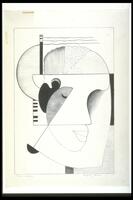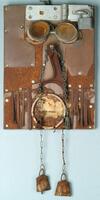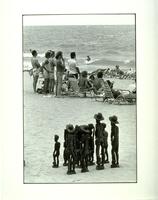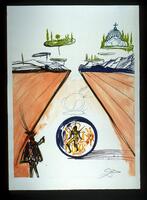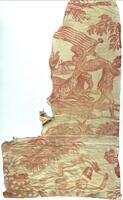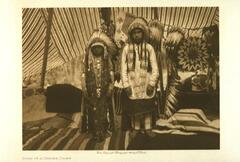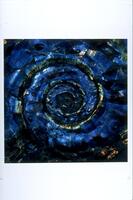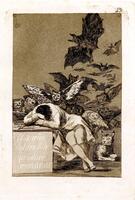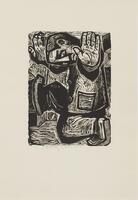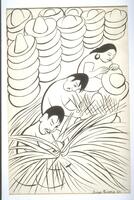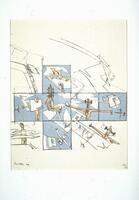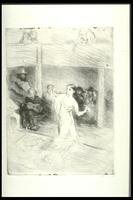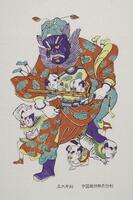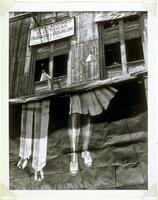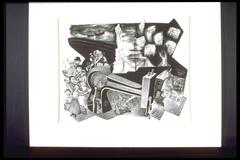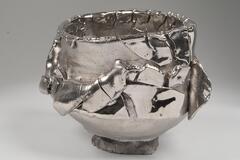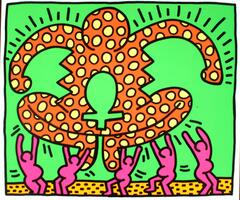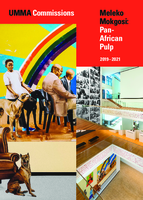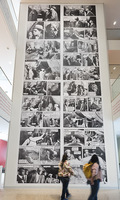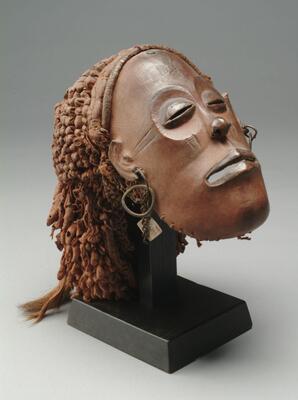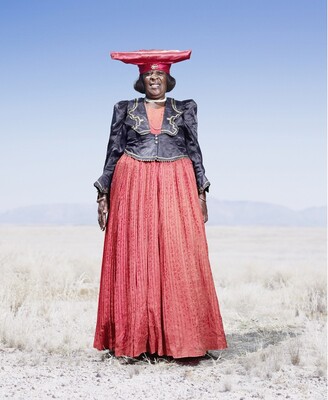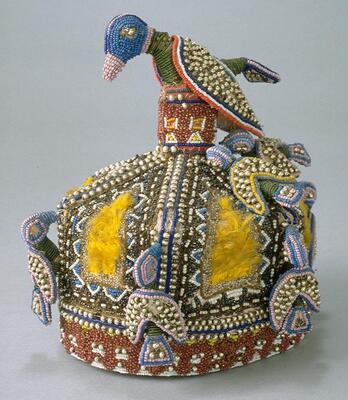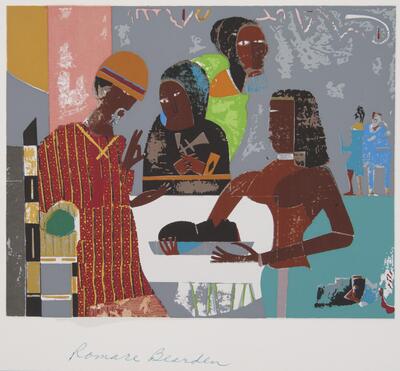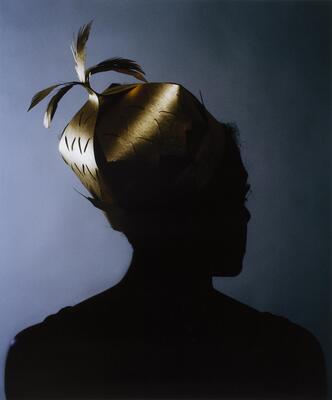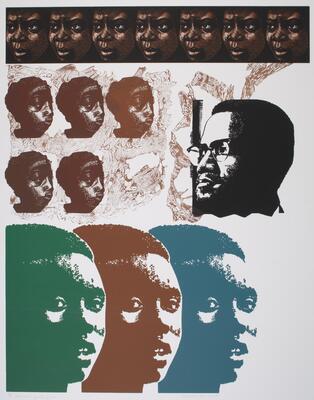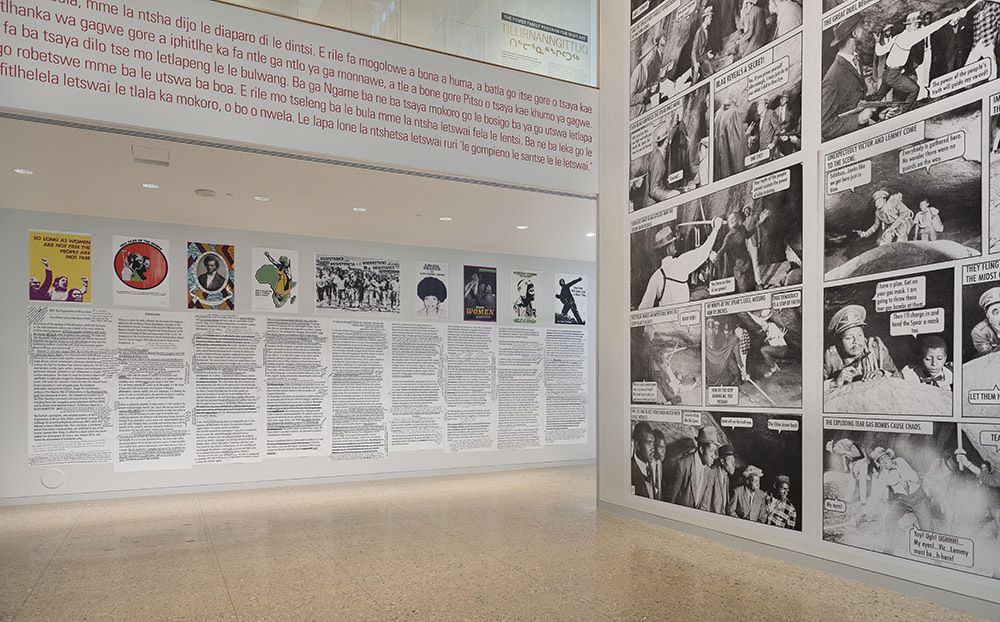F20 Gedar - HIST 195: Pan-African Pulp
Struggles for Independence and the Decolonization of Africa
Section 1: Portraiture: Symbolism and Visual Culture
In Pan-African Pulp, artist Meleko Mokgosi has included three portraits of women (little girl, Herero elder, bust).
1) What symbolism do you see represented in each portrait? (There may be some reoccurring themes)
Little Girl:
Herero Elder (painting on wall):
Bust:
2) Here we also have this Pwo mask from UMMA's collection. The Pwo mask is, in some ways, a portrait as well, yet heavily coded in culturally specific visual language (e.g. half-closed eyes signify they are calm; a high forehead is a symbol of wisdom; an elaborate hairdo indicates wealth). Without knowing the culturally specific visual language, we might not be able to easily read that symbolism into this mask.
3) What visual cues or codes do you see in Meleko's three portraits that lead you to that symbolism? Where do you think we get this visual language? Where have you seen it before?
Section 2: Adopting and Adapting
As previously mentioned, the portrait of the women in the "frame on the wall" is of a Herero Elder. The long dresses are heavy and reflect the style of the Victorian period with numerous petticoats worn to add fullness to their skirts. They are hand-sewn by the women who add their own personal style and flair. The Herero women included a horn-like headscarf (known as otjikaiva) which is usually made with a fabric that matches the dress. The horned feature of the headscarf symbolizes the Herero’s prized cattle, which are a wealth and status symbol in their communities.
1) The Herero were massacred by the Germans, yet dress up in their traditional clothing. Why do you think that is? How are the Herero people showing resistance towards their history of oppression through their clothing?
2) Take a look at these Yoruba slippers and crown, worn by an oba (a king). What evidence of colonialism do you see used here?
Ultimately, we see how these different groups adopted and adapted the visual imagery of their oppressors to take control of that which was controlling and hurting them. Colonial officials assumed that their subjects were showing their allegiance through this mimicry, while more often than not this was - in fact - a blatant act of resistance.
Section 3: Pan-Africanism in the UMMA Collection
1) After learning a bit about Pan-Africanism from looking at Meleko Mokgosi's mural, what representations do you see in this piece by Qes Adamu Tesfaw's African Union?
Things to think about: Describe what you see. What are the different elements? Who is included? What are they doing? What does this piece make you think about? Any connections to pop-culture?
Pan-Africanism was a political movement that brought together African nations, as well as Africans based on the continent and in the diaspora. Starting in the 1930s, close ties existed between African and African American intellectuals, who helped advance each other interests. These conversations also happened in the arts.
Sam Nhlengethwa (pronounced kleng-eh-twa) was born in the mining community of Payneville Springs in 1955 and grew up in Ratanda location in Heidelberg, east of Johannesburg. He often paints works that are "moments of time". In this work from the UMMA Collection, he is paying tribute to American artist Romare Bearden.
2) How has he created this "space" to pay tribute to Bearden?
Shani Peters (b. 1981 Lansing, MI) is a multi-disciplinary artist based in New York City. She holds a B.A. from Michigan State University and an M.F.A. from the City College of New York. In this work Nzinga Futures, Peters likely references Queen Nzinga of Ndongo and Matamba. Nzingha Mbande (1583–1663) was Queen of the Ambundu Kingdoms of Ndongo (1624–1663) and Matamba (1631–1663), located in present-day northern Angola. Born into the ruling family of Ndongo, Nzinga received military and political training as a child, and she demonstrated an aptitude for defusing political crises as an ambassador to the Portuguese Empire. She later assumed power over the kingdoms after the death of her father and brother, who both served as kings. She ruled during a period of rapid growth in the African slave trade and encroachment of the Portuguese Empire into South West Africa, in attempts to control the slave trade. Nzinga fought for the freedom and stature of her kingdoms against the Portuguese in a reign that lasted 37 years.
In the years following her death, Nzinga has become a historical figure in Angola. She is remembered for her intelligence, her political and diplomatic wisdom, and her brilliant military tactics.
3) What similarities in design (use of simple graphics, themes) do you see between this poster and the Pan-African posters that sit above the Manifesto in Pan-African Pulp?
4) Why do you think poster design is a popular political tool, such as for protests and window signs? What posters have you seen that you felt made a big impact?
Part of 2 Learning Collections
<p><span style="font-size: 14px;">Teaching Guide</s...
<p><br></p>W20 / W 21 Andre - AAS 201
<p><span style="font-size: 14px;">W20 RAMIREZ - CAT...
<p><span style="font-size: 14px;">Originally used f...
<p><i>Oh, honey... A Queer Reading of the Collectio...
Created For
K-12 EducatorK-12 Student
Museum Visitor
UMMA Docent
UMMA Staff
University Faculty
University Student
Rate this Resource
AVG: 0 | Ratings: 0
& Author Notes
All Rights ReservedLast Updated
September 16, 2020 3:31 p.m.Report
Reporting Policy

